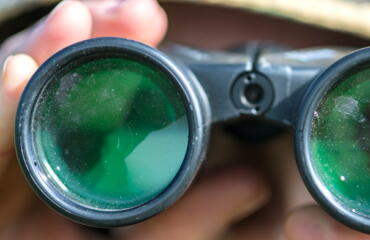Technically difficult and highly controversial. That’s how ecology experts and First Peoples working in Greater Bendigo’s parks and reserves describe the prospect of bringing back native predators like dingoes and quolls.
But as a means of addressing the root cause of pests and animal overpopulation, and improving the odds of ecosystems surviving coming climate extremes, they argue it deserves to be seriously explored.
Dja Dja Wurrung Traditional Owner group Djaara is looking to work with researchers and private landowners to discuss ways to manage animal species and, in turn, mitigate a hotter, fiercer future climate, says Djaara’s galk-galk dhelkunya (forest gardening) project manager, Oli Moraes.

“From an ecological perspective and a cultural perspective, having gal gal back in the landscape is really important. But to do that, it’s obviously hugely political,” says Djaara’s forest gardening project manager, Oli Moraes, who underlines that he does not speak as a Djaara man.
Investigating the feasibility and impacts of reintroducing culturally significant apex predators is one of the longstanding goals of Djaara’s foundational Dhelkunya Dja (Healing Country) plan, which scopes out objectives through to 2034.
The absence of native predators has led to a range of ecological problems, says Moraes. They include “invasive predators, pest predators … even overpopulation of kangaroos that overgraze culturally important plants and grasses and trees”.
One native predator that historically served a key role in the animal food chain across Dja Dja Wurrung Country is the gal gal, or dingo, “and a key aspiration in a range of Djaara’s work is to have gal gal back in the landscape,” he said.
“From an ecological perspective and a cultural perspective, having gal gal back in the landscape is really important. But to do that, it’s obviously hugely political,” says Moraes, who underlines that he does not speak as a Djaara man.
A climate and sustainability specialist, his work with Djaara on its climate strategy continues nearly a decade of involvement with Indigenous and community groups.
A 2021 proposal to investigate the reintroduction of native predators in the Grampians/Gariwerd, in part to control pests and over-abundant species, was fiercely opposed by some Victorian farmers and populations.
Conservation officer Jason McAinch, who works with farmers across Bendigo, Hepburn and Macedon Ranges as lead of the Healthy Landscapes program, suspects much of the backlash comes from a lack of understanding among many farmers and landowners about what bringing animals back might look like.
“It’s a bit like saying ‘there needs to be a reintroduction of more brown snakes into the city of Melbourne’ – there’d be an uproar about that as well,” says McAinch.

“We spend lots of time and money shooting kangaroos, but we don’t reinstate the thing that can actually help manage that problem in the first place, which is dingoes”: Professor Euan Ritchie. Photo: Shutterstock.
McAinch grew up on dairy farms in Gippsland, Gunaikurnai country, and has previously worked as a farmer and a dairy adviser to the Victorian Government.
From his vantage point observing landowners’ attitudes to Indigenous land management over the years, McAinch says “there’s increased respect and acknowledgement, but it’s coming off a fairly low base
“I think there needs to be a safe environment for both Djaara and landowners and farmers to talk,” says McAinch.
“Some don’t want to approach the subject and others feel unsafe if they do.”
Wildlife ecology expert Professor Euan Ritchie says nature conservation in Australia often focuses on battling the problems colonisers have created instead of root causes.
“We spend lots of time and money shooting kangaroos, but we don’t reinstate the thing that can actually help manage that problem in the first place, which is dingoes,” Ritchie says.
It is well established that animals like dingoes could help manage herbivores like wallabies, kangaroos and feral goats, the conservation expert says.
“There is definitely going to be an impact on the livestock, but that can be managed.”
Management strategies include releasing dingoes only within large, fenced areas, and ensuring neighbouring properties have guardian animals like Maremma sheepdogs and donkeys, both effective against dingoes. Compensation schemes for livestock loss could also be considered.
First Nations peoples have been shaping Australia’s landscapes for over 60,000 years, Ritchie notes.
He says that humans will always have a role working with nature.
This is the first story of the Future Bendigo series, a collaboration between the University of Melbourne’s Centre for Advancing Journalism and the Bendigo Advertiser. It will be ongoing. If you have any story ideas, please let us know at [email protected]




